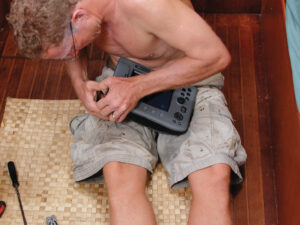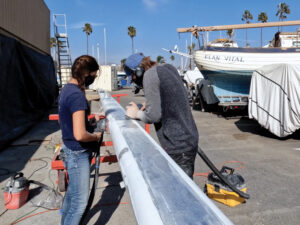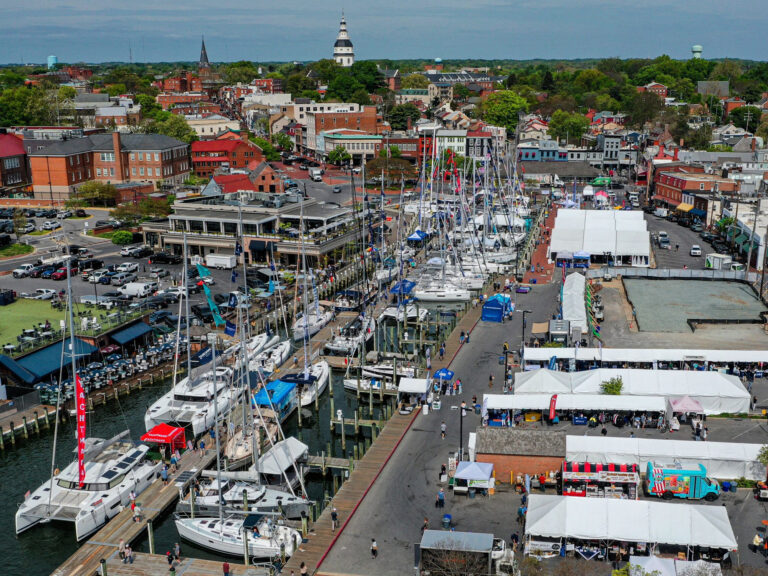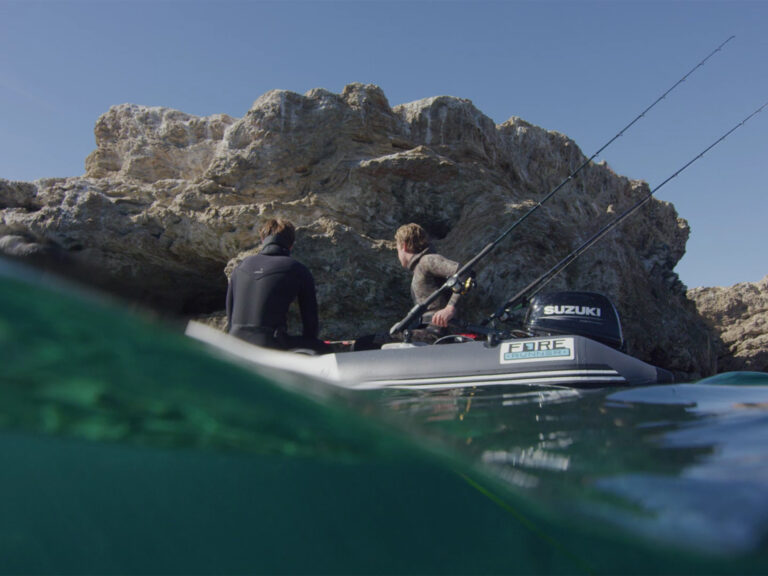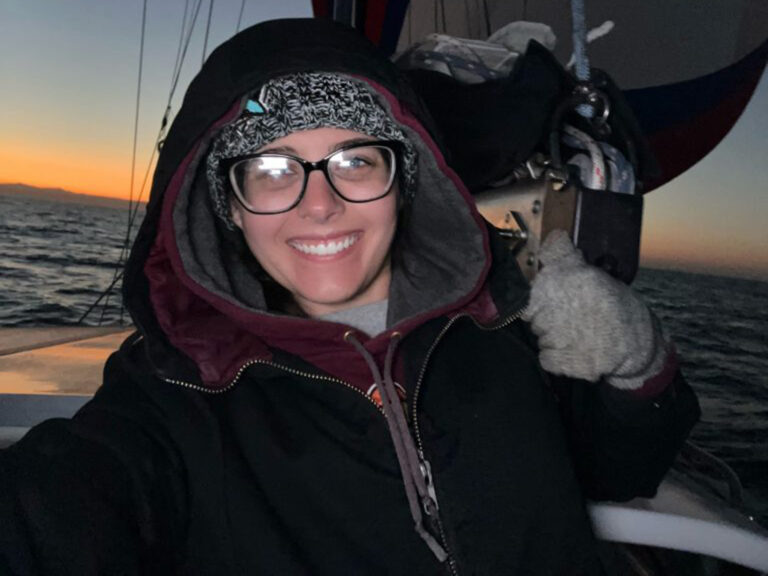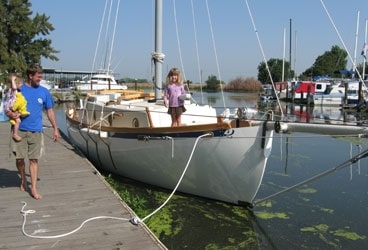
moving day 368
When I began work finishing the Cape George 31 hull that eventually became Ganymede, it was with a distinct sense of urgency. The average time it takes to finish or build a boat, it seems, is seven to 10 years. For those that make it to the end, that is. It’s not difficult to find partly finished hulls on eBay or Craigslist that were abandoned along the way, whether from illness, budgetary issues, or simply loss of interest. I was determined not to become one of those casualties. Why, I’d be pushing 40 by then! And so my wife, Danielle, and I threw ourselves heart and soul into the project. It was a little more difficult for her, with one child as we began and two others who came along the way, but she allowed me more time in the shop than most wives would have, and she lent a willing hand whenever she could.
Rather than running out of steam, we managed to get into a flow and fairly fly along with the project. My job waiting tables was an evening thing, so most mornings allowed me four or five productive hours for working on the boat, and when business was slow, I’d sometimes have 10 glorious, fiberglass-filled days in a row.
Still, it seemed like it’d been forever by the time we started shopping around for trucking companies to haul Ganymede from our backyard to the river in Stockton, California. Not that the project was finished-far from it-but we’d done enough to launch, and having the boat finally in the water would feel as though we were really getting somewhere. Also, if we waited until the fall rains began, the ground would be too soft for a hydraulic trailer with an eight-ton boat on board, and we’d have to wait almost another year to launch. And that was far too horrible to contemplate. It was better to finish the remaining chores on the list in the water and not risk having to spend another winter scraping by with hardly a shift to be had in the restaurant’s off-season. If nothing else, we could move aboard and find work down the river around San Francisco.
But a more audacious plan was hatching in the back of my mind. If we could get her ready in time, why not sail somewhere for the winter, get a good taste of cruising, and seek work when the kitty ran low? Perhaps the economy would’ve recovered by then and people would be hiring again. So I ordered two gallons of bottom paint while Danielle, bouncing a baby on her knee, searched the Internet for boat movers.
The truck, trailer, and driver she found had all seen better days. Ganymede was alternately in danger of being stove in or capsized on dry land, but when she finally disappeared down the road, with a tattered Oversized Load banner sagging astern and the last three feet of keel and rudder still hanging off the back of the trailer, I was grateful. I’d half expected the driver to take one look at the hill he’d have to back over and at how far into the ground the keel blocking had sunk into the soft earth and simply drive away. He very nearly had, he told me afterward.
Things were better at the other end. The Travelift operator knew his business, and less than an hour after the truck arrived at the boatyard, Ganymede was in the water, floating trim with her mast stepped. It was exactly three years and one month from when her hull arrived in our yard to the day she was launched, and though I’ll be driving out to work on her every weekend until winter comes, it feels, in a way, like she’s done. She lists, ever so slightly, when you step from the pier onto her deck; she rocks just the tiniest bit when a wake moves through the marina: She’s a boat afloat. The biggest hurdles have been cleared, and it’s only a matter of time, really, until she’ll be ready to sail away on her trial voyage. I can hardly wait.
At this point in his tale, Ben Zartman is almost ready to go but still has a few more things to do. He’ll continue to report on his progress every other month.

